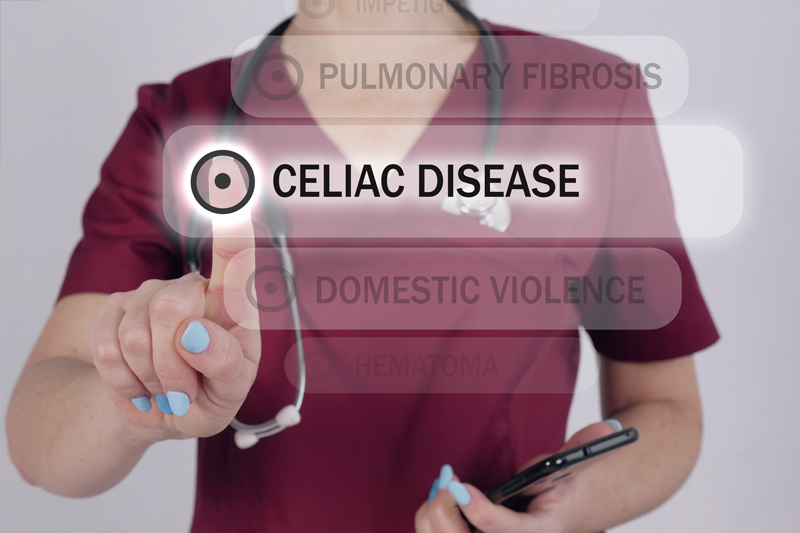A serious autoimmune disorder, celiac disease occurs due to an immune reaction to eating gluten that leads to damage in the small intestine. Also called celiac sprue or gluten-sensitive enteropathy, celiac disease can occur at any age after people start eating foods or medicines that contain gluten. If left untreated, it can lead to serious health problems like malnutrition, bone weakening, nervous system problem, infertility and miscarriage. Coding staff for healthcare facilities and medical practices providing treatment for celiac disease must have adequate knowledge about the related diagnostic and procedural codes. For accurate clinical documentation of this autoimmune condition on the medical claims, physicians can rely on the services of medical billing companies.
As per reports from Celiac.org, celiac disease tends to affect 1 in 100 people worldwide. It is estimated that as many as 2.5 million people in the United States may have undiagnosed celiac disease and are at high risk for long-term complications. The condition is often hereditary as people with a first-degree relative with celiac disease (parent, child, and sibling) have a 1 in 10 risk of developing celiac disease. The signs and symptoms can range from mild to severe, change over time and vary from person to person. Children are more likely to develop digestive symptoms than adults. Symptoms may include-abdominal pain, bloating and gas, chronic diarrhea or constipation, nausea and vomiting. Variations in symptoms may depend on several factors like – age, damage to the small intestine, and the amount and age at which gluten consumption began.
Diagnosing and Treating Celiac Disease
Diagnosis of celiac disease is quite difficult as the condition shares several symptoms that are similar to other diseases such as – irritable bowel syndrome, lactose/gluten intolerance, pancreatic insufficiency, small intestinal bacterial growth, and Crohn’s disease of the small intestine. Diagnosis may begin with a medical history evaluation of the patient and his/her family. People with celiac disease often have high traces of antiendomysium (EMA) and anti-tissue transglutaminase (tTGA) antibodies in their body which can be easily detected with blood tests. Common blood tests like complete blood count (CBC), serum albumin test, liver function test, cholesterol test, and alkaline phosphatase level test will be performed to accurately diagnose the condition. If any of these blood test results indicate celiac disease, physicians may request endoscopy or biopsy to view the small intestine and assess the damage to the villi.
Serologic tests (blood tests that check for antibodies) that are recommended are – tissue transglutaminase (tTG) immunoglobulin A (IgA) and tTG immunoglobulin G (IgG) tests, endomysial antibody (EMA) -IgA test and deamidated gliadin peptide (DGP) -IgA and DGP-IgG tests. The endomysial antibody (EMA, IgA) assay has high specificity for celiac disease and is used to confirm positive anti-tTG results.
CPT codes used to report these procedures include:
- 86255 – Under Qualitative or Semiquantitative Immunoassays
- 83516 – Immunoassay for analyte other than infectious agent antibody or infectious agent antigen
- 82784 – Gammaglobulin (immunoglobulin)
To report gastrointestinal endoscopy, these codes are used –
- 43235 Esophagogastroduodenoscopy, flexible, transoral; diagnostic includes brushing or washing when performed
- 91035 Esophagus, gastroesophageal reflux test, with mucosal attached telemetry pH electrode(s) placement, recording, analysis and interpretation91035 code involves placement of a capsule in the esophagus with the use of a detachable probe. It is also important to use the right modifiers applicable to these codes.
Treatment modalities for celiac disease include making diet modifications (by permanently removing gluten from the patient’s diet) as this allows the intestinal villi to heal and begin absorbing nutrients properly. In addition, physicians may prescribe vitamin and mineral supplements and other medications (like steroids) to manage nutritional deficiencies and control intestinal inflammation.
ICD-10 diagnosis codes to report celiac disease–
- K90 Intestinal malabsorption
- K90.0 Celiac disease
- K90.1 Tropical sprue
- K90.2 Blind loop syndrome, not elsewhere classified
- K90.3 Pancreatic steatorrhea
- K90.4 Other malabsorption due to intolerance
- K90.41 Non-celiac gluten sensitivity
- K90.49 Malabsorption due to intolerance, not elsewhere classified
- K90.8 Other intestinal malabsorption
- K90.81 Whipple’s disease
- K90.89 Other intestinal malabsorption
- K90.9 Intestinal malabsorption, unspecified
K90.0 Celiac disease code is applicable to celiac disease with steatorrhea; celiac gluten-sensitive enteropathy; non-tropical sprue.
Gastroenterologists and other specialists providing treatment need to document various diagnosis tests and other procedures using the right medical codes. Professional gastroenterology medical coding services can support these specialists in their medical coding and ensure submission of accurate claims on time.




